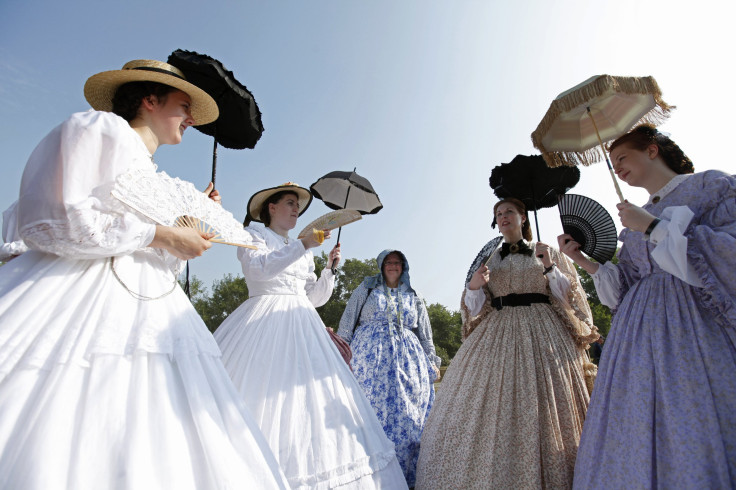
These days, Mother’s Day in America is about appreciating your mother. She carried you for 9 months! Bore you, clothed you, fed you and might still have you on her insurance. It’s time to pay back that unconditional love and support, if only with a card, some flowers, and a brunch’s worth of quality time. Basically, modern Modern Mother’s day is about children individually paying homage to their own mothers by sharing gestures of love (even if that’s devolved into a Christmas-like marathon of materialism). It wasn’t always this way. In fact, few would recognize the original Mother’s Day, which our forebears observed almost oppositely. It was about mothers better taking care of their children and each other collectively, and focused not on superfluous treats like flours and mimosas, but essentials like sanitation, medicine and child care.
The Grandmother of Mother’s Day (we’ll get to the mother later) is arguably Ann Reeves Jarvis, credited for organizing the first Mother’s Day Work Clubs to improve public health. Much of their focus was infants, and the clubs shaped their programs to confront the high infant mortality amongst women in the American East. In 1850, the infant mortality rate was between 200 and 300 per 1,000 births. (Why the range of averages? Statistics were kept separately for white and black women). Jarvis gave birth to about 12 children, and only 4 reached adulthood. Today only a handful of places (Afghanistan, Somalia, Mali) have an infant mortality rate over 100. Ann Jarvis’ Mother’s Day Work Clubs attacked infant and child mortality with sanitation education (germs theory was barely a thing) and the country’s first milk inspections. They raised money for medicines -- a lot of that went to common 19th century diseases like tuberculosis -- as well as nannies and domestic workers to help in households with where a mother was sick.
Mother’s Day Work Clubs changed it’s focus at the outbreak of the Civil War. The clubs were split, with some mother’s in Confederate States and others in Union States. Jarvis maintained a neutral stance throughout the war, and urged volunteers to help improve sanitation conditions among troops on both sides. During the war, volunteers would educate soldiers on the disinfecting properties of boiling drinking water and washing rags. During and after the war, Jarvis organized “Mother’s Friendship Day” which aimed at reconciling Yankee and Dixie families. She asked volunteers to make a pledge.
“To make a sworn-to agreement between members that friendship and good will should obtain in the clubs for the duration and aftermath of the war. That all efforts to divide the churches and lodges should not only be frowned upon but prevented.”
Ann Jarvis Mother’s Day Tips:
- Boil water for one minute before using it to cook or clean.
- Only buy milk that’s been inspected by a professional.
- Bathe at least once per week.
The Mother Of Mother’s Day
It wasn’t until Ann Reeves Jarvis died in 1905 that anyone considered making a Mother’s Day devoted not to children, but to mothers. Like so many memorials, Mother’s Day was born out of grief. Ann’s daughter Anna Jarvis started a letter writing campaign to commemorate a day for all mothers. The first Mother’s Day was held on May 10th, 1908, in a department store in Philadelphia, and at a school house in West Virginia, where Jarvis the elder had taught. Ann made sure that 500 hundred white carnations -- her mother’s favorite flower -- were on display. By 1909 Mother’s Day was a national issue, and a proposal to make it official came before the U.S. Senate.
As she lobbied for a national Mother’s Day, Anna Jarvis found herself co-opted by special interests: florists. She never wanted the holiday to become a commercial event, but it quickly did. Flower vendors funded her speaking tour and made her mother’s carnations into a must-buy item. Pretty soon daughters and sons were expected to wear white carnations on mother’s day, while florists were known to price-gouge like crazy. In response, Ann ordered thousands of buttons with white carnations printed on them, and then sent them out to supporters for free.
Mother’s Day popularity increased, and so did it’s commercialization. Ann envisioned had always assumed people would recognized Mother’s Day with some quality mom time, perhaps punctuated with a handwritten letter. But of course it was on it’s trajectory to become another sale day for every schill on the block, from car salesmen to mattress stores. Anna allegedly snapped one day at a restaurant when she saw “Mother’s Day Salad” advertised on the menu. She order it, paid for it and then dumped the contents of the salad bowl on the floor. Ironically, Anna soon began a lobbying effort to get rid of Mother’s Day. She didn’t succeed.
Anna Jarvis Mother’s Day Tips:
- Wear a white carnation button.
- Write a letter to your mother.
- Don’t buy your mother meaningless crap.
© 2024 Latin Times. All rights reserved. Do not reproduce without permission.